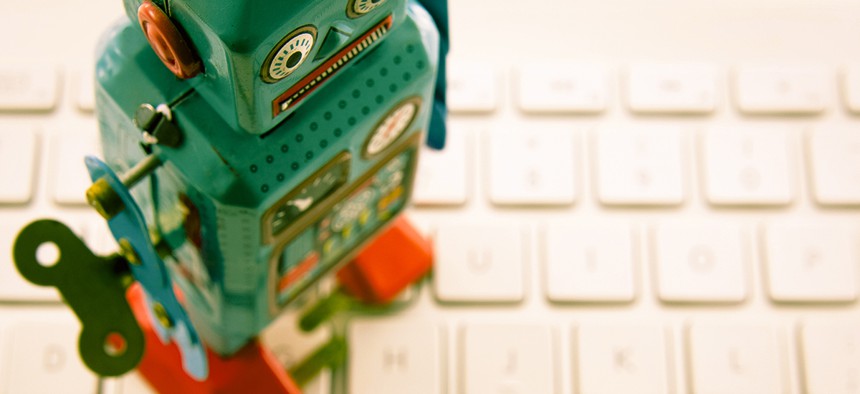Watch Out, Designers: AI Design Bots Getting Better at Building Websites

charles taylor/Shutterstock.com
The goal isn’t to replace great artists, but to make everyone else into a pretty good one.
The first attempts by startups using artificial intelligence to design websites haven’t amounted to much. A much-anticipated company called The Grid has failed to deliver on expectations. There is still no AI art hanging in MOMA yet.
Data could fix that. Instead of building more clever bots, startups like Wix are mining troves of user data to train algorithms that offer sound design advice for business websites. Website building platforms are experimenting with AI as part of the future of design. The goal isn’t to replace great artists, but to make everyone else into a pretty good one.
It’s been a long time coming, says Nitzan Achsaf, head of Wix’s artificial intelligence efforts.
“I’ve been in tech 20 years, and I still can’t make a stunning website,” he said in an interview. It’s too difficult to avoid the “ugly zone” when choosing fonts, layout, image, text and structure. Those things require professional judgement.
Wix set out to build that intelligence into a product that makes personalized decisions in seconds. Developers tapped website data from Wix’s 85 million users (plus some human coaching) to extract some core principles about what design combinations and possibilities worked best.
To use what Wix calls its Artificial Design Intelligence, users answer five questions about their business and preferences. After uploading content (or adding a URL from their existing site), Wix builds a website tailored to the business’s category with pricing, scheduling and other common pages incorporating user data. Writers have added template copy so users can edit a completed site.
Designers’ reactions have been mixed.
“AI, as developed by Wix … is no more artificial intelligence than robots on an automated assembly line constitute skilled craftsmen,” writes Ben Moss editor of WebdesignerDepot. “Wix ADI is an elaborate template browser.”
For many business, however, that’s all they need. Half of small businesses still do not have a website 25 years after the arrival of the web and they cite expense as a major factor.
Wix’s first public example of an AI-designed site is an attractive if uninspired take on a personal trainer website. Acsaf predicts that today’s version of ADI, publicly available later this year, is only a hint of what’s possible as more users join.
“The AI is as strong as the data,” says Achsaf. “It’s only going to get better.”

Others are not far behind. Weebly, which claims 30 million users, says while AI-designed websites are overhyped and under-delivered to date, “we think having more intelligence behind the web design process is the future,” wrote David Rusenko by email. “It’s an area that we’re investing in.” Google and universities are researching how to make machines better designers.
Yet, AI has inherent constraints to achieving great design, argues Igal Raichelgauz, CEO of image recognition company Cortica. Today’s technology excels at making good choices within narrow sets of rules, but that’s ultimately limiting because they’re not making decisions based on feelings and human understanding.
Today’s technology is a dead end, argues Raichelgauz. As machines grow better at unsupervised learning over massive data sets, it’s possible that self-taught systems can move beyond simple rules such as centering images or picking layouts with size ratios. He points to Google’s research into neural networks as a taste of what’s possible when we allow an artificial intelligence to make more “creative” decisions.
“In good design, breaking rules is just as important as sticking to them,” writes Raichelgauz. “When AI can learn when to do which and to make decisions accordingly, we’ll really have something.”



